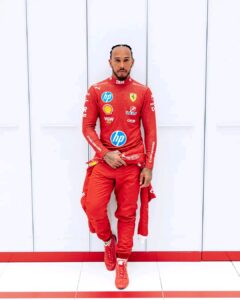
Valentino Rossi is no stranger to challenges. The Italian legend, revered as “Il Dottore” in MotoGP, has successfully transitioned to car racing since hanging up his bike leathers in 2021. His journey from the MotoGP grid to the endurance racing circuits, particularly in the World Endurance Championship (WEC) and the GT World Challenge Europe (GTWCE), has been nothing short of impressive. With every lap behind the wheel of his BMW M4 GT3, Rossi has shown the world that he has plenty left to offer in the world of motorsports.
However, as whispers of Rossi’s potential shift to the Hypercar category in WEC grow louder, it’s worth considering whether this next step is a wise one. Despite the allure of Hypercar racing—the premier class in endurance racing—this move may not be as favorable for Rossi as it seems, even with the backing of BMW and the promise of cutting-edge machinery. Here’s why Valentino Rossi’s switch to the Hypercar category might not work out in his favor, despite all the hype.
The Hypercar: A Whole Different Beast
To understand the challenge, it’s crucial to grasp what Hypercar racing is all about. This top-tier category in WEC features hybrid machines capable of blistering speeds, with complex aerodynamics, advanced energy recovery systems, and cutting-edge technology. These cars are often described as the Formula 1 of endurance racing, requiring drivers to operate on the absolute limit for hours, all while managing complex systems and tires that degrade over time.
Rossi has admitted that racing in the Hypercar class is a dream for him. In a recent interview, he acknowledged that Hypercars are the “MotoGP of prototypes,” highlighting their immense speed and precision . However, despite his enthusiasm, there are several reasons why stepping into this category might not yield the results Rossi would hope for.
1. The Steep Learning Curve
Although Rossi has proven himself capable behind the wheel, endurance racing’s premier class represents an entirely different ball game. He has spent his post-MotoGP years in the GT3 class, which, while competitive, doesn’t approach the intensity and complexity of Hypercar racing. GT cars are more forgiving, with simpler aerodynamics and fewer hybrid systems to manage compared to Hypercars, which are ten seconds faster per lap on average. This difference creates significant pressure for the driver to maintain peak concentration for hours at a time .
While Rossi has shown progress in endurance racing over the last few years, mastering the intricacies of a Hypercar could take much longer. Endurance races are often about minimizing errors and managing complex systems, from energy recovery to tire degradation. For a driver relatively new to the world of cars, stepping into Hypercar racing would mean facing off against experienced drivers who have spent their careers mastering this class of vehicle.
2. Age is Not on His Side
Rossi’s legendary career spans decades, and at 45, he remains competitive in GT racing. However, the physical and mental demands of driving a Hypercar, particularly in endurance events, might prove more difficult as he enters the twilight of his racing career. Endurance races like the 24 Hours of Le Mans push drivers to their limits, demanding exceptional stamina, focus, and reflexes.
In the Hypercar class, Rossi would be competing against younger, more seasoned drivers who have years of experience in these high-performance machines. Rossi’s age could become a significant disadvantage in an environment where split-second decisions and sustained high-performance driving are essential for success. As much as fans would love to see him in a Hypercar, the brutal reality is that time may not be on his side when it comes to adapting to this incredibly demanding category .
3. Hypercar Competition is Fierce and Unforgiving
The Hypercar category in WEC is fiercely competitive, with teams like Toyota, Ferrari, and Porsche fielding well-established, top-tier programs. These manufacturers pour significant resources into research and development, creating cutting-edge machines designed to dominate endurance racing. Even with BMW’s support, Rossi would find himself up against some of the best drivers in the world, many of whom have specialized in prototypes for years.
It’s worth noting that Hypercar teams also rely heavily on driver categorization to determine lineups. Rossi, despite his immense skill and experience, is classified lower than the “platinum” drivers who typically dominate the Hypercar category. These drivers—seasoned professionals who have mastered endurance racing—would present a formidable challenge for Rossi as he attempts to find his footing in the category .
4. Limited Time for Adaptation
If Rossi decides to make the switch to Hypercar racing, time will be his greatest enemy. While he has expressed interest in testing BMW’s LMDh car at the rookie test in Bahrain later this year, there is no guarantee he will have enough time to fully adapt to the new class before committing to a full season . Hypercar racing requires a deep understanding of the vehicle’s systems, team dynamics, and race strategies, all of which take years to develop.
Considering Rossi’s current commitments to both the GTWCE and his role as a mentor for VR46 academy riders, it’s unlikely he will have the time needed to fully immerse himself in Hypercar racing. Spreading himself too thin could ultimately compromise his performance in both arenas, making it difficult for him to excel in either .
5. Family Commitments and Reduced Racing Schedule
Beyond the technical and physical challenges, Rossi has been open about his desire to reduce his racing commitments in the coming years due to family reasons. With his partner, Francesca, and their growing family, Rossi is eager to spend more time at home, cutting down his racing schedule to a more manageable 10-11 events per year . The demands of a full Hypercar season, which includes iconic but grueling races like the 24 Hours of Le Mans, might conflict with his desire for a lighter schedule.
It’s also worth considering that reducing his overall racing load while attempting to transition into a new and more demanding class could be counterproductive. Rossi would need more time on track, not less, to develop the skills necessary to compete in Hypercar racing.
Conclusion: Staying the Course in GT Racing
Valentino Rossi has already cemented his legacy as one of the greatest motorsports icons of all time. His successful transition from two wheels to four in endurance racing is a testament to his skill and adaptability. However, despite the allure of Hypercar racing, a switch to this category may not be the best move for him at this stage in his career.
The steep learning curve, combined with the physical demands, fierce competition, and limited time to adapt, could make the transition challenging for Rossi. Moreover, his desire for a reduced racing schedule to prioritize family time further complicates the feasibility of a Hypercar campaign.
Ultimately, Rossi’s best bet may be to continue refining his craft in the GTWCE or WEC’s GT3 class, where he has already proven himself a capable and competitive driver. By staying in his current class, Rossi can continue to enjoy racing at a high level while balancing his family commitments and mentoring responsibilities.





